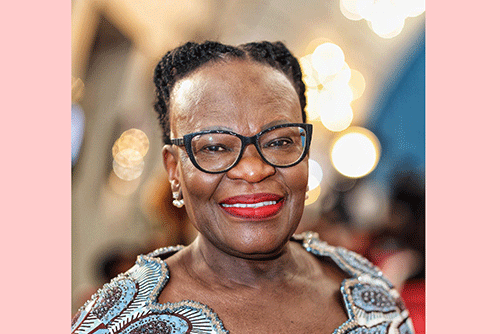Lahja Nashuuta
As the United States’ tariffs continue shaking the global trading order, raising fears of recession and wiping trillions of dollars off the market value of major firms, Namibia has not been spared as reality begins to sink in.
Last year, Namibia exported goods worth approximately N$5.1 billion to the United States (US).
Responding to the concerns on Tuesday in Parliament, international relations and trade minister Selma Ashipala-Musavyi said the increased tariffs would likely reduce Namibia’s exports due to higher prices for these goods.
The US earlier this month announced the new tariff policy, which affects 57 countries, excluding Mexico and Canada.
The US cited several reasons for implementing this tariff policy, including rebalancing global trade flows into the US, addressing currency manipulation, and bringing manufacturing jobs back to the country.
The US tariff policy has two components: a 10% general “baseline” tariff on most trading partners, and a secondary set of higher, country-specific “reciprocal” tariffs on 57 trade partners, including Namibia.
“Unless indicated otherwise by the US government, we can only assume that these tariffs will apply to all Namibian products entering the US market,” the seasoned diplomat said.
The new tariff policy imposes a 21% reciprocal tariff on key Namibian exports.
To be hardest hit are Namibian products, such as beef, fish and minerals.
Ashipala-Musavyi said the tariffs could create unfair market conditions, making it harder for Namibian products to compete fairly in the US market.
She highlighted the volatility and uncertainty this policy introduces to global trade, which could undermine Namibia’s commitments under the World Trade Organisation (WTO) and the African Growth and Opportunity Act (AGOA).
“We are deeply concerned about many aspects of the newly imposed US tariffs, including the lack of transparency and consultations with affected countries prior to their implementation. This unilateral action contradicts the principles of the multilateral trading system, which emphasise transparency and prior engagement before members enact decisions that may impact other WTO members,” Ashipala- Musavyi stated.
Response
The Ministry of International Relations and Trade plans to engage with stakeholders, collect export data and discuss the issue with the US Embassy.
Namibia will also collaborate with the Southern African Customs Union (SACU) to form a unified approach and advocate for a rules-based multilateral trading system.
The ministry will continue working with Namibian stakeholders, particularly through the Namibia Trade Forum (NTF), to gather data on exports to the US.
This will ensure that any government response is evidence-based and grounded in reliable data to assess the potential implications of these tariffs.
Ashipala-Musavyi confirmed that the ministry has already initiated discussions with the US Embassy in Windhoek.
It will continue diplomatic talks with the US government to better understand the potential impacts of these tariffs, particularly considering Namibia’s benefits under AGOA.
Neighbouring countries face even steeper tariffs, with Lesotho subjected to 50%, Botswana 37%, South Africa 30% and Angola 32%.
Making his contribution, Rodney Cloete of the Independent Patriots for Change (IPC) advised the government to negotiate tariff reductions and explore alternative markets in Europe, Asia and within the African Continental Free Trade Area (AfCFTA).
“The announcement by US president Donald Trump of a 21% tariff on Namibian exports, effective 9 April 2025, is deeply concerning. This retaliatory measure, in response to Namibia’s 42% tariff on US goods, threatens key export sectors, such as diamonds, uranium, fish, beef, lamb, grapes and blueberries,” Cloete said.
-lnashuuta@nepc.com.na


